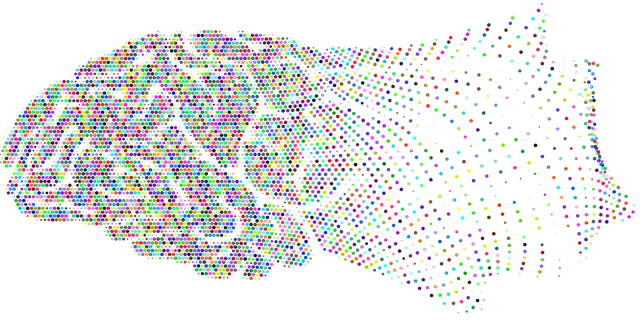Public awareness campaigns, such as the Mental Wellness Podcast Series Production, effectively combat mental health stigma and promote understanding. For Golden Adjustment Disorder Therapy (GADT), targeted campaigns address specific audience needs, including adolescents and adults, through tailored messaging and community engagement. Crafting compelling narratives, utilizing communication channels like social media and podcasts, and incorporating empathy-building strategies empower individuals to overcome challenges. Measuring success through clear metrics and data analysis is crucial for program improvements, ensuring GADT remains effective and adaptable to diverse population needs.
Public awareness campaigns play a pivotal role in informing and empowering communities, especially regarding mental health conditions like Golden Adjustment Disorder (GAD). This article delves into the strategic development of such campaigns, highlighting their impact on societal understanding and acceptance. We explore key aspects, from identifying specific target audiences to crafting compelling messages that resonate. Additionally, we emphasize the importance of choosing the right communication channels and measuring success for continuous improvement in public health initiatives, focusing on GAD therapy accessibility.
- Understanding Public Awareness Campaigns: Their Role and Impact
- Identifying Target Audiences for Golden Adjustment Disorder Therapy Campaigns
- Crafting Compelling Messages and Choosing Effective Communication Channels
- Measuring Success and Iterating for Better Results in Public Health Initiatives
Understanding Public Awareness Campaigns: Their Role and Impact

Public awareness campaigns play a pivotal role in shaping societal perceptions and behaviors, acting as a catalyst for positive change. They serve as powerful tools to educate, inform, and engage communities on various issues, from health initiatives to environmental concerns. These campaigns are designed to trigger discussions, foster empathy, and encourage collective action. By disseminating knowledge and dispelling myths, they can lead to improved decision-making and behavioral adjustments, ultimately contributing to a healthier and more compassionate society.
In the context of mental health, awareness campaigns like the Mental Wellness Podcast Series Production have been instrumental in reducing the stigma associated with conditions such as Generalized Anxiety Disorder (GAD) Therapy. Through compelling storytelling and expert insights, these initiatives build empathy and promote understanding, encouraging individuals to seek support and initiate conversations about their emotional well-being. Incorporating strategies for Empathy Building and Emotional Intelligence into such campaigns further strengthens their impact, fostering a sense of community and interconnectedness that is essential for navigating complex mental health issues.
Identifying Target Audiences for Golden Adjustment Disorder Therapy Campaigns

When developing public awareness campaigns for Golden Adjustment Disorder Therapy (GADT), pinpointing the right target audiences is key to ensuring effective messaging and engagement. GADT, a specialized form of therapy addressing adjustment disorders, benefits diverse groups but requires tailored approaches based on age, cultural backgrounds, and specific challenges. For instance, campaigns aimed at adolescents should focus on encouraging open dialogue about mental health struggles within peer groups, while those targeting adults might emphasize the importance of self-care and resilience in demanding careers.
Mental Health Policy Analysis and Advocacy plays a pivotal role in shaping these targeted efforts. By understanding community needs and existing disparities in access to GADT services, advocates can design campaigns that boost awareness about the availability of Confidence Boosting and Social Skills Training components within such therapy. This strategic targeting not only increases the likelihood of reaching individuals who will benefit directly but also contributes to broader societal shifts in perceiving and addressing mental health concerns.
Crafting Compelling Messages and Choosing Effective Communication Channels

Crafting compelling messages is a key aspect of successful public awareness campaigns. It involves condensing complex information into clear, concise, and relatable narratives that resonate with the target audience. The goal is to not only inform but also inspire action, whether it’s adopting new behaviors, donating to causes, or spreading awareness about an issue like Golden Adjustment Disorder Therapy (GADT). Incorporating Mind Over Matter Principles can help in framing messages that focus on empowerment and resilience, encouraging folks to overcome challenges related to GADT.
Choosing the right communication channels is equally vital. With a plethora of options available today, from social media platforms to podcasts and community events, it’s essential to select channels that align with the target audience’s demographics and preferences. For instance, while younger generations might engage more on Instagram or TikTok, older adults may prefer newsletters or local support groups. Offering Compassion Cultivation Practices through these channels can foster understanding and empathy, enhancing overall trauma support services and community engagement.
Measuring Success and Iterating for Better Results in Public Health Initiatives

Measuring success and iterating for better results are crucial aspects of public health initiatives. To assess the impact of campaigns like Golden Adjustment Disorder Therapy, it’s essential to define clear metrics and evaluate them consistently. This could involve tracking changes in awareness levels, engagement with services, and improvements in mental health outcomes. By analyzing these data points, healthcare professionals can identify what’s working and what needs adjustment.
For instance, promoting Self-Care Routine Development for Better Mental Health might lead to increased participation in community workshops. Additionally, Risk Management Planning for Mental Health Professionals could enhance service providers’ confidence and reduce burnout rates. Integrating feedback loops and making data-driven adjustments ensure that initiatives like Golden Adjustment Disorder Therapy remain effective and evolve to meet the changing needs of the population.
Public awareness campaigns play a pivotal role in educating communities about health issues like Golden Adjustment Disorder (GAD). By understanding target audiences, crafting compelling messages, and utilizing appropriate communication channels, these campaigns can significantly impact knowledge dissemination and encourage desired behaviors. Measuring success through data-driven methods allows for continuous improvement, ensuring that initiatives like GAD therapy gain the necessary traction. Through iterative processes, public health advocates can optimize their strategies, ultimately fostering a more informed and supportive society.














